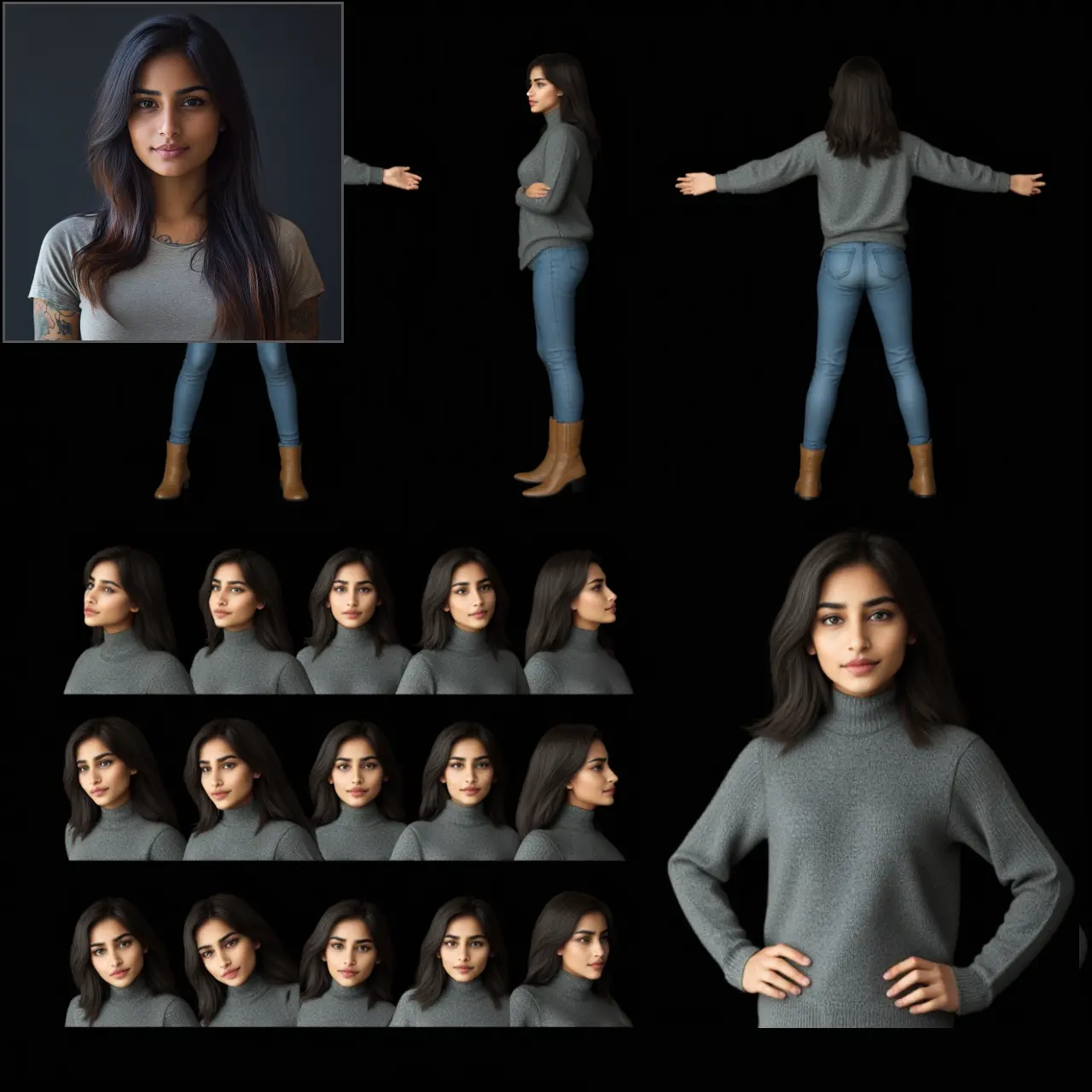ComfyUI Node: MergeFluxLoRAsQuantizeAndLoaddMultiGPU
MergeFluxLoRAsQuantizeAndLoaddMultiGPU
Categorymultigpu
pollockjj (Account age: 3830days) Extension
ComfyUI-MultiGPU Latest Updated
2025-04-17 Github Stars
0.26K
How to Install ComfyUI-MultiGPU
Install this extension via the ComfyUI Manager by searching for ComfyUI-MultiGPU- 1. Click the Manager button in the main menu
- 2. Select Custom Nodes Manager button
- 3. Enter ComfyUI-MultiGPU in the search bar
Visit ComfyUI Online for ready-to-use ComfyUI environment
- Free trial available
- 16GB VRAM to 80GB VRAM GPU machines
- 400+ preloaded models/nodes
- Freedom to upload custom models/nodes
- 200+ ready-to-run workflows
- 100% private workspace with up to 200GB storage
- Dedicated Support
MergeFluxLoRAsQuantizeAndLoaddMultiGPU Description
Streamline merging, quantizing, and loading LoRA models across multiple GPUs for efficient resource management and optimization.
MergeFluxLoRAsQuantizeAndLoaddMultiGPU:
The MergeFluxLoRAsQuantizeAndLoaddMultiGPU node is designed to streamline the process of merging, quantizing, and loading models across multiple GPUs, specifically focusing on LoRA (Low-Rank Adaptation) models. This node is particularly beneficial for AI artists and developers who work with large-scale diffusion models and need to efficiently manage resources across multiple GPUs. By integrating LoRA models with specified weights, this node allows for the seamless merging of these models into a single, optimized model file. It also supports quantization, which reduces the model size and enhances performance without significantly compromising accuracy. The node's ability to handle multiple GPUs ensures that the computational load is distributed effectively, making it an essential tool for those looking to optimize their AI model workflows.
MergeFluxLoRAsQuantizeAndLoaddMultiGPU Input Parameters:
model_sd
This parameter represents the state dictionary of the model to be merged. It is a dictionary that contains all the necessary information about the model's architecture and weights. The state dictionary is crucial for the merging process as it serves as the base model onto which the LoRA models are integrated. There are no specific minimum or maximum values for this parameter, but it must be a valid state dictionary.
lora_paths
This parameter is a list of file paths pointing to the LoRA models that need to be merged. Each path in the list should lead to a valid LoRA model file. The paths are essential for locating the LoRA models that will be integrated into the base model. There is no fixed number of paths required, but the list should contain valid file paths.
weights
This parameter is a list of weights corresponding to each LoRA model specified in the lora_paths list. The weights determine the influence of each LoRA model during the merging process. Each weight should be a floating-point number, with a typical range from 0.0 to 1.0, where 1.0 means full influence. The list of weights should match the number of LoRA paths provided.
device
This parameter specifies the device on which the merging and quantization processes will be executed. The default value is "cuda", indicating that the operations will be performed on a GPU. This parameter is crucial for ensuring that the computational tasks are executed on the appropriate hardware, which can significantly impact performance.
MergeFluxLoRAsQuantizeAndLoaddMultiGPU Output Parameters:
merged_model_path
This output parameter is the file path to the newly created merged model. It is a string that indicates where the merged model has been saved. This path is essential for accessing the final model after the merging and quantization processes are complete. The merged model can then be used for further tasks or loaded into other systems for inference.
MergeFluxLoRAsQuantizeAndLoaddMultiGPU Usage Tips:
- Ensure that all LoRA model paths provided in the
lora_pathsparameter are valid and accessible to avoid errors during the merging process. - Use appropriate weights in the
weightsparameter to control the influence of each LoRA model on the final merged model, which can help in achieving the desired model performance. - Consider the available GPU resources when setting the
deviceparameter to ensure optimal performance and avoid overloading a single GPU.
MergeFluxLoRAsQuantizeAndLoaddMultiGPU Common Errors and Solutions:
"Module not found - skipping"
- Explanation: This error occurs when the specified module path does not exist or is incorrect.
- Solution: Verify that the module path is correct and that the module exists in the specified location. Ensure that all necessary files are in place before executing the node.
"LoRA file not found"
- Explanation: This error indicates that one or more LoRA model files specified in the
lora_pathsparameter could not be located. - Solution: Check the file paths provided in the
lora_pathslist to ensure they are correct and that the files are accessible. Correct any incorrect paths and try again.
"Quantization failed"
- Explanation: This error suggests that the quantization process did not complete successfully, possibly due to an unsupported quantization type or a missing binary.
- Solution: Ensure that the quantization type specified is supported and that all necessary binaries for quantization are available and correctly configured.
MergeFluxLoRAsQuantizeAndLoaddMultiGPU Related Nodes
- Description
- MergeFluxLoRAsQuantizeAndLoaddMultiGPU:
- MergeFluxLoRAsQuantizeAndLoaddMultiGPU Input Parameters:
- MergeFluxLoRAsQuantizeAndLoaddMultiGPU Output Parameters:
- MergeFluxLoRAsQuantizeAndLoaddMultiGPU Usage Tips:
- MergeFluxLoRAsQuantizeAndLoaddMultiGPU Common Errors and Solutions:
- Related Nodes
RunComfy is the premier ComfyUI platform, offering ComfyUI online environment and services, along with ComfyUI workflows featuring stunning visuals. RunComfy also provides AI Playground, enabling artists to harness the latest AI tools to create incredible art.


